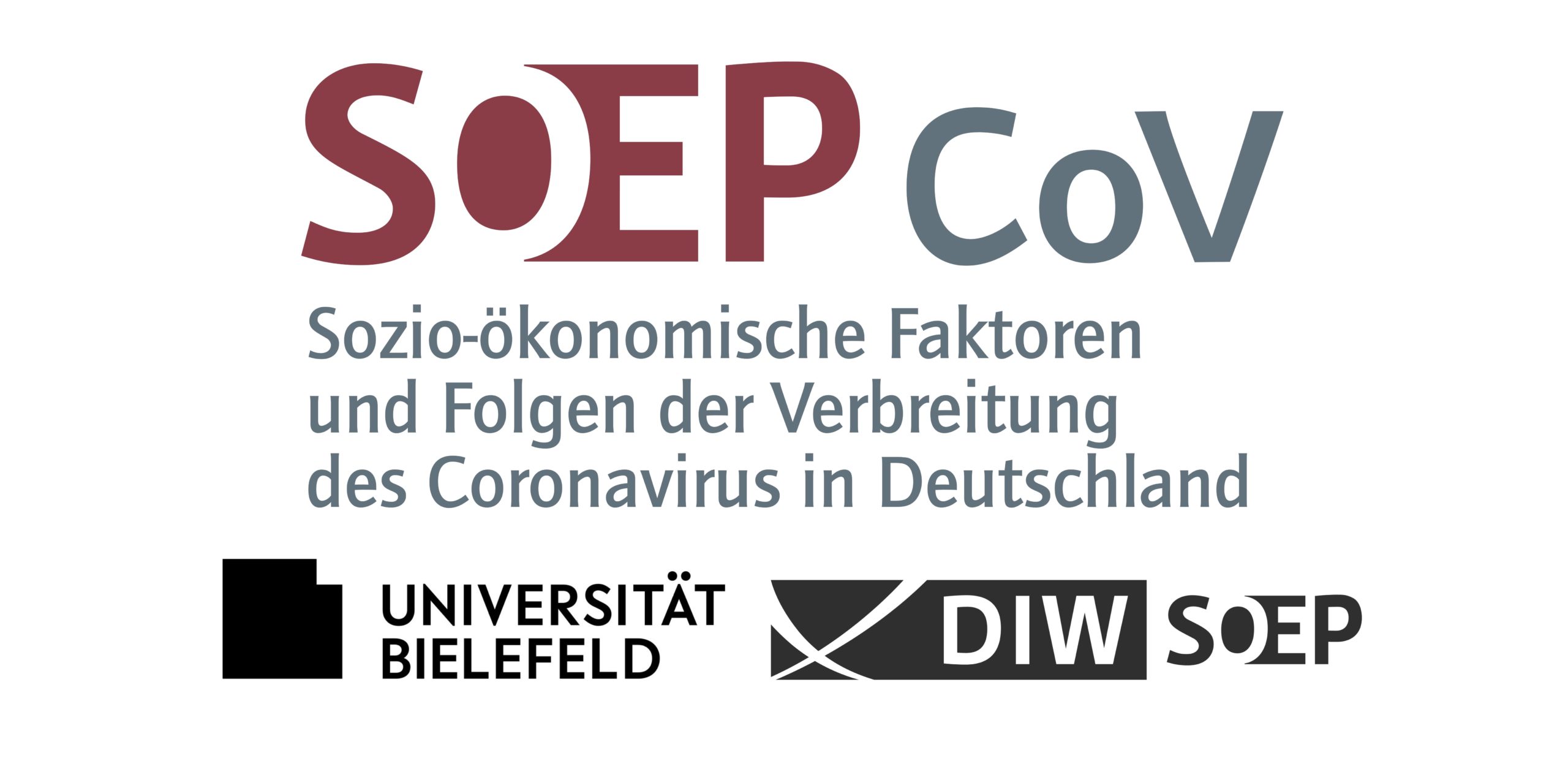Methodology
The Socio-Economic Panel (SOEP)
The Socio-Economic Panel (SOEP) is one of the largest and longest-running multidisciplinary panel studies in the world. Currently, about 30,000 people in 20,000 households are surveyed annually. Since the same households participate in the study every year, it is possible to follow respondents across the entire life course. The SOEP is a household sample and at the same time a longitudinal and thus multi-cohort sample.
The SOEP is based on random samples representing the population of all private households in Germany. This makes it an excellent tool for drawing general conclusions about the realities of people’s lives in Germany—and thus also about the effects of the corona crisis.
Sample(s) & compensation for missing survey data
For first SOEP-CoV survey, the participating SOEP households were divided into nine subsamples or tranches. The subsamples were structured in such a way that household composition within each one was representative of the population of private households in Germany. Subsamples 1 to 5 were surveyed every two weeks and subsamples 5 to 9 were surveyed weekly to measure how the crisis was affecting private households over time. A total of 12,000 households were asked to participate in the SOEP-CoV study. The (rounded) number of households in each of the nine samples was: 3000, 3000, 2,000, 1000, 600, 600, 600, 600, 600. This meant that more households were interviewed at the beginning of the survey, when Germany had stricter social distancing restrictions in place, than at the end, when restrictions had been loosened. This design reflects the assumption that the effects of the crisis are likely to have been more severe at the beginning and to have decreased over time.
Diese erste Erhebung startete am 01. April 2020 und wurde am 28. Juni 2020 abgeschlossen. Insgesamt konnten Personen aus 6.694 Haushalten befragt werden. Für die Auswertungen wurden Gewichtungsfaktoren genutzt, die Verzerrungen durch selektiven Ausfall (z.B. von zeitlich stark eingeschränkten Haushalten) in den berechneten Statistiken entgegenwirken. Mehr zur Gewichtung der SOEP-CoV-Daten: PDF-Version in German und in English.
Eine zweite Befragung der in Welle 1 teilnehmenden Personen/Haushalte wurde vom 18. Januar bis zum 15. Februar 2021 durchgeführt. Insgesamt wurden Personen aus 6.038 Haushalten erneut befragt.
Questionnaires
Both the first and second survey were conducted using computer-assisted telephone interviewing (CATI). The fieldwork was conducted by Kantar Public. Repeated attempts were made to reach respondents who could not be reached initially by calling repeatedly at different times of day.
The English questionnaires as PDF files (please refer to the Germans site for the German versions)
Wave one 1 (April-Jun 2020)
- Tranche 1
- Tranche 2 und 3 / English version
- Tranche 4 / English version
- Tranche 5 und 6 / English version
- Tranche 7 und 8 / English version
- Tranche 9 / English version
Wave 2 (January/February 2021)
Mehr über unsere Methodik und die Studie erfahren Sie in unserer englischsprachigen Projekt- und Datendokumentation sowie in unserer englischsprachigen Fachpublikation:

